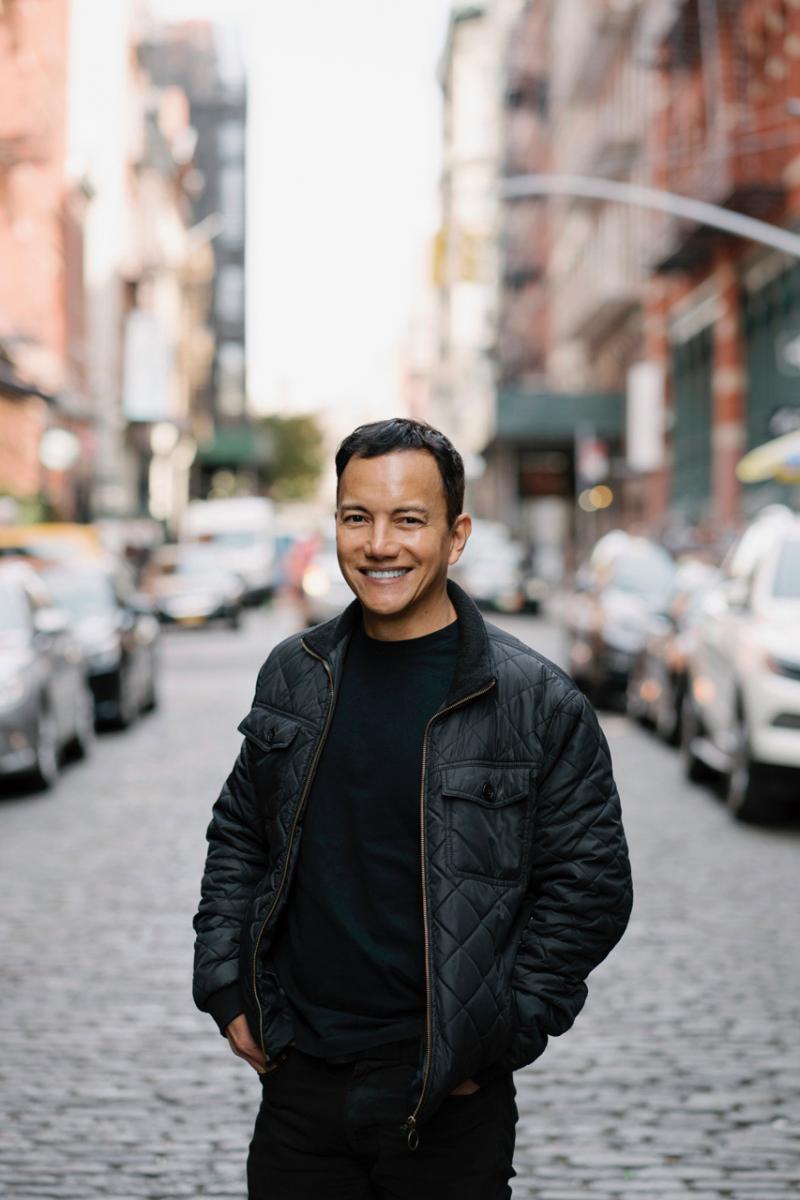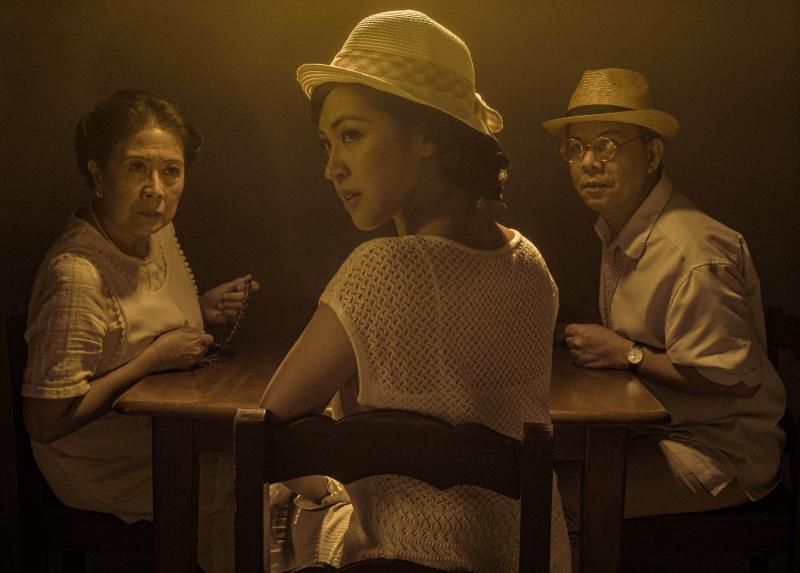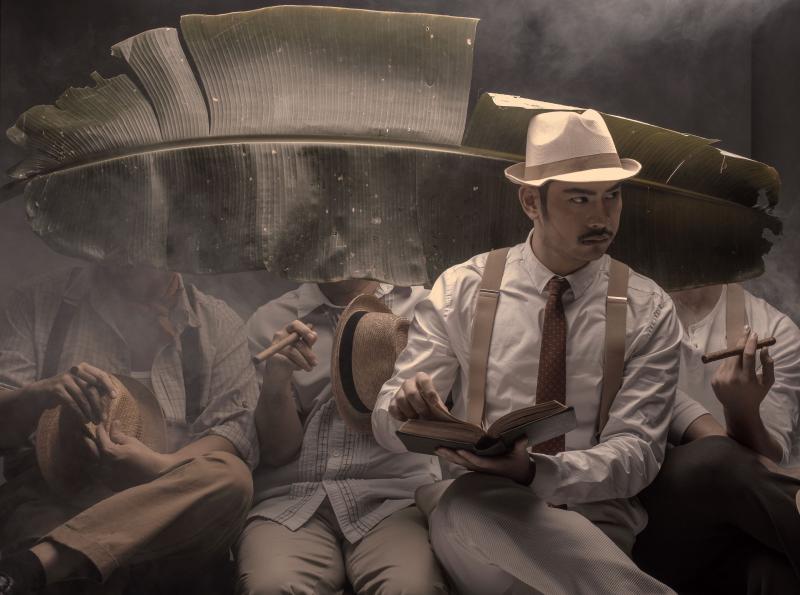Exclusive Interview: Designer-Turned-Director Joey Mendoza Talks ANNA IN THE TROPICS

"Anna was a game-changer in Joey's maturity as a theater consumer. Up until he saw the original Broadway production nearly two decades ago, the theater had been a function of "make-believe, escapism," as he recalls it. "With Anna, I felt the characters were real. They were people I knew..."
New York, N.Y. - Joey Mendoza considers himself a private man. He balks at the attention and prefers to let his work take the stage - literally. He's in the public eye, nonetheless, because brilliant work inevitably betrays its source.
A new decade heralds the promising innovation in Manila's burgeoning theater landscape. The timing couldn't be more apt for Joey to reclaim his identity: a progressive set designer with a collaborative bent, who goes the extra mile to support a show's achievement despite the logistical challenge of working from his remote digs in Manhattan.
Joey has been summoned, if you will, to take on his biggest project yet - the dual role of designer and director of Repertory Philippines' (REP) upcoming production of Anna in the Tropics, a Pulitzer Prize-winning drama by Cuban-American playwright Nilo Cruz.
It's a rare intermission from his stint in New York, though not quite the respite we identify with an expatriate's return to his native land. Expect him to work harder during his time off. Manila is still home, after all, and he's all about giving back to the community that kindled his creative fire.
His sets are ubiquitous, and his talent distinctive. What eludes the public sphere is Joey's astute perspective on the culture of power and leadership. While much of the industry is tethered to a fixed chain of command, he brings an egalitarian mindset to every assignment. It takes an absolute risk to remain vulnerable in an otherwise transient pursuit.
He knows what he's up against. The dual position with REP may seem at odds with his desire for inclusive leadership, but that's the part he looks forward to negotiating. He's already mastered the far-flung transmission of set designs, securing a reputable nod as a skilled problem-solver. But beware the one caveat - he'll take no part in commodified art and garden-variety installations.
Pardon the cliché, but Joey is predisposed to think outside the box. It takes one glance at his design principles to discern his inclination for non-conformity and innovation. He returns to Manila bearing good news, meaning, he aims to disrupt some well-regarded but antiquated norms.

new lector at her father's Cuban cigar factory;
(L-R) Brian Sy, Skyzx Labastilla, Ricardo Magno
The Designer-Director as Educator
Anna in the Tropics is the sort of job that's tailor-made for a set designer who thinks like a director. "My designs have always been very directorial, I'd like to think," he says. "I sit with the director and discuss staging. They go hand in hand. It's not just background."
On that note, local theatres have seen an upsurge in Joey's contribution over the last few years, his body of work running the gamut in texture and form. Consider just a few standouts showing his range: Company, A Doll's House Part ll, Full Gallop, Hair, Silent Sky, The Quest for the Adarna, and Eto Na! Musikal nAPO!
One of the revealing hallmarks of a curtain call is the recognition of a production as a shared enterprise. That said, collective triumph owes its genesis to the lone visionary who confronts the open-ended inquiry of a blank canvas. The designer-director must summon the geometric insight to exploit space and create the optics to reflect a playwright's narrative terrain. If form follows function, design precedes staging; it empowers movement and can animate blocking and composition.
Henceforth, Joey's collaborative gift is on display. In his world, everyone owns a genuine stake in the way the story is told. His professional training is a constant reminder that "the director is not God; it takes a village."
Be that as it may, Joey, the designer, admits to a small measure of anxiety about directing his first production. But it's not from a lack of rapport with actors or from a scarcity of insight into Cruz's symbolic variety. He is profoundly invested in the text and knows the high stakes of an actor's work. In fact, Joey is neck-deep in dramaturgy, going so far as pursuing a personal connection with the playwright himself.
Not to sound reductive, but he's the textbook idealist with self-expectations too steep for his comfort. He seems to care less about the cognoscenti's approval than he does about meeting his target.

the Alcazar family that owns a Cuban cigar factory
in Tampa, Florida; (L-R) Madeleine Nicolas, Gab
Pangilinan, Gie Onida
Add to that his motif of championing a malleable and Socratic alternative to a system forged in the conservative discipline. Given his current circle of influence, the reign of the know-it-all theater tyrants is all but defunct. Kinship is de rigueur and supplants the patrician model that shaped his formative theater education.
In this regard, we can appreciate the anxiety associated with his return to the fold. It's normal to get triggered by our past even as we recognize how much we've learned from it.
Joey's take: "The respect we give to directors is the same we owe actors, designers, technicians, etc. It's democratic - and everything, no matter how seemingly insignificant, on that stage must be treated with respect by everyone who steps on it."
Frankly, it's a common sentiment that barely gets past lip service. But Joey's resolve is clear: active listening is his chief responsibility. It's perhaps his best strategy for navigating a meaningful rehearsal process.
His novel approach: "I plan on having as much table work as possible - an open forum on what the play is all about and how each actor feels about the characters. One actor, for instance, needed some time trying to understand how an idea of mine ties into his dramatic arc. We will figure that out together. While I have a clear vision in my head on where I want a scene to go, I remind myself that so do my actors. After all, it's not me on the stage. It's also essential that all the designers communicate with each other - design needs dialogue. They aren't mutually exclusive. Only then will we all agree on our vocabulary on stage. I think they should all be part of the rehearsal process."
Tony-winning director Bartlett Sher dispensed similar advice in a recent interview with National Public Radio. He invoked the wisdom of "collective genius" in a candid assessment of his work on Broadway and other venues. Not one to take sole credit for group effort, Sher is known to seek input from actors and technicians, virtually delegating a good chunk of rehearsal ideas to his band of artists. In lesser hands, it's a recipe for potential mayhem. But if his current Broadway revival of To Kill A Mockingbird is any indication, Sher is a step ahead of the learning curve; and as a matter of principle, Joey is in good company.

His efforts are not without precedent. Indeed, building alliances is customary practice in Joey's daily routine in N.Y. A member of the distinguished theater faculty at Fordham University at Lincoln Center, he mentors students in the Design and Production Track and co-teaches "Page to Stage," a course wherein students pore over a script and formulate ideas for submission to both director and designer. No doubt, the faculty is in a leadership position, but not from some orthodox, exalted perch. The instructor navigates the route, but the student drives the bus, as it were. The program derives success from the students' agency as much as the teachers' ability to yield and allow students to shape the process.
The practice recalls the pioneering genius of the late Maria Montessori, rehashed in a trending research where old is new again, and rubrics are vested in formative assessment and authentic collaboration. It's the upside-down teaching model that regards a teacher (or a director) as a facilitator who asks all the right questions, as opposed to a chief executive who commands and administers judgment. It's Joey's style, to a tee.
Joey's commitment to elite collaboration finds him returning with two fellow N.Y.-based designers. Becky Bodurtha (costume design) is a colleague from Fordham University at Lincoln Center, where she served as an instructor and Head of Design and Costume Shop Supervisor, boasting an accumulation of designs from renowned classics to new plays. Fabian Obispo Jr. (original music/sound design) comes to Manila, having recently completed A Life/Seawall at The Public Theatre with Jake Gyllenhaal. He has also worked extensively Off-Broadway and regionally, including Atlantic Theatre Company, Manhattan Theatre Club, Arena Stage, and Juilliard, among others.
From my vantage point as a theater educator, Anna in the Tropics is among the finest dramas in the contemporary canon available to actors of color. So, imagine my delight at Joey's invitation to discuss the play at his home during one of my visits to N.Y. late last summer. (His midtown apartment is the ideal abode for an artist who designs space for a living: captivating, original, and smart. It's a sanctuary for creative brainstorming.)
Chalk it up to a healthy ego, his impulse upon my arrival was to elicit an honest critique of his scenic design. The initial drafts, though not entirely literal (he rarely goes there), were faithful representations of Cruz's Cuban-American setting, yet they hinted at possibilities of an extended heritage. Joey is not keen on replicating a Broadway production (what's the point?); hence a touch of the Philippine tropics must find its way in the mix.

Tolstoy's classic Anna Karenina to Cuban cigar
factory workers.
For instance, a case is made for scenic elements signifying the Filipino's provincial existence. Regarding dialogue, there's no imperative to reproduce Cuban-American naturalism; therefore, much is gained by retaining a trace of our native accent. This dynamic is a bit of a stretch for REP, whose creative renown includes a half-century of casting local actors with nearly-flawless American affectation. Joey is not averse to bending an acquired tradition, and he's ready for any potential controversy of his choices. Playing safe has never been his course of action, and he is gratified by REP's immense support in his creative direction.
I asked him to reflect on his development as a set designer and to convey the lessons accrued over the years that might inform his role as a "fledgling" director.
"There was a fundamental difference in the design process in Manila - at least from my experience and in a general sense. Design back in the day was based on someone else's work, and we adapted to it - or directed to live in that world - because it was the standard, the original...designers or directors would use the original material (Broadway production photos, Tony Award clips) as something to aim for, what to emulate. I needed to unlearn all that and find my point of view. At the time, I never really questioned anything, I just accepted it. We didn't know what that process was, nor questioned those choices. So, how could we be "good" if we didn't know what we were doing?
"Nowadays, we have many talented designers who create these worlds. Understanding the climate, geography, and conditions in such a place requires much discussion. And that's what I enjoy the most - the process. And as a director, now it's even more apparent to me why this is essential - or basic."
Anna in the Here and Now
The play is far and away the most suitable launching piece for Joey, who has long admired the imagery and lyricism of Cruz's writing. Additionally, the inherent pluralism is a validation of Joey's global fixation. After all, his lifelong refinement involves a good deal of international travel, virtually shaping his identity as a world citizen. It explains his affinity for immigrant artists whose work underscores the impact of diaspora and the ensuing struggles of assimilation.

cigar factory.
Anna was a game-changer in Joey's maturity as a theater consumer. Up until he saw the original Broadway production nearly two decades ago, the theater had been a function of "make-believe, escapism," as he recalls it. "With Anna, I felt the characters were real. They were people I knew. Hey, those stories on the stage could be true and real to me, even if they were Americans. Sure, there were Filipino plays I'd seen before that related, but this felt bigger and more universal. Theater, all of a sudden, wasn't just entertainment anymore. It became a personal experience."
The play is an allegorical masterpiece. It features the colorful lives of cigar workers in the Spanish district of Ybor City, Florida, in the early 1900s. As part of the tradition they brought from Cuba, the workers are regaled with stories that break the monotony of the long day, rendered by a charming professional lector as workers roll cigars by hand. It affirms the power of literature to enlighten, even as the world of Cruz's characters unravels in their effort to steer unmitigated passion. Cruz's throughline is the deft conceit to conjure Tolstoy's Anna Karenina.
With trenchant artistry, Cruz fashions a delicate but complex blend of characters who evoke the riveting intrigue of the social circles in imperial Russia. They are worlds apart, but both works share all-too-familiar themes of marital adversity, institutional hypocrisy, and the struggle to preserve cherished traditions amid the realities of modernization. Cruz, like Tolstoy, reveals the crack of sunlight in people's overcast lives. He exposes the raw and purgative wound that yields a spiritual conversion vis-a-vis acts of self-sacrifice.
To that point, Cruz leaves Joey with a universal, thematic prescription: Palomo, Conchita's duplicitous husband in the story (through whose lens Cruz shapes his play), is willing to "go to that dark place" to find his light. It's a prudent reminder that humans aren't fully evolved until we've integrated the exquisite with the horrific.
For sure, transformation can be messy, but it's fiercely honest. Short of emulating a seasoned therapist, a director's charge is to create an environment that allows for the whole unpacking of personal baggage - foibles and triumphs, warts and all. Whatever "method" is invoked here, those moments of eureka are best achieved through open discourse free of judgment.

In Joey's point of view, the old-school, top-down leadership model falls short of creating that ideal. Under the lights, the show might appear strong enough to ignore the missing piece; but to astute practitioners, service to mere optics barely scrapes the surface. To stimulate discovery that inspires an artistic community, a particular ideology matters.
It bears repeating that Joey's research was duly enriched by Cruz's sage counsel. It's rare to have open access to a playwright - a celebrated laureate, no less. The upshot of Cruz's guidance expedites Joey's plunge into a holistic and multifaceted design concept. Moreover, Joey aligns with Cruz's penchant for the surreal as we muse over a narrative that modulates from carnal to whimsical, with imagery that fuses alternate realities while accentuating the Filipino character and identity.
In Joey's words: "Our histories are similar. Those guys up there could very well be Filipino-American. I recommended this play many times, but no one seems to have seen what I saw in Cruz's work. Now it's different. Times have changed. I hope it means we're broadening our tastes and understanding. I think it's exciting that stories from many other backgrounds and colors are being told in a bigger arena. Also, theater has changed so much in the past two decades. There are many new ways of storytelling. I thought this might be that little play that I can share the things I learned."
REP's Anna in the Tropics stars Skyzx Labastilla (Conchita), Gab Pangilinan (Marela), Paolo O'Hara (Cheche), Gie Onida (Santiago), Madeleine Nicolas (Ofelia), Brian Sy (Palomo), and Richardo Magno (Juan Julian).
The show plays at Onstage Theatre, Greenbelt One, Ayala Malls, Makati City from 13 March to 5 April 2020.
Get the best deals on tickets to Anna in the Tropics HERE.
Photos/Sketches: Joey Mendoza, Ben Hon, Jojit Lorenzo
Comments

Videos

